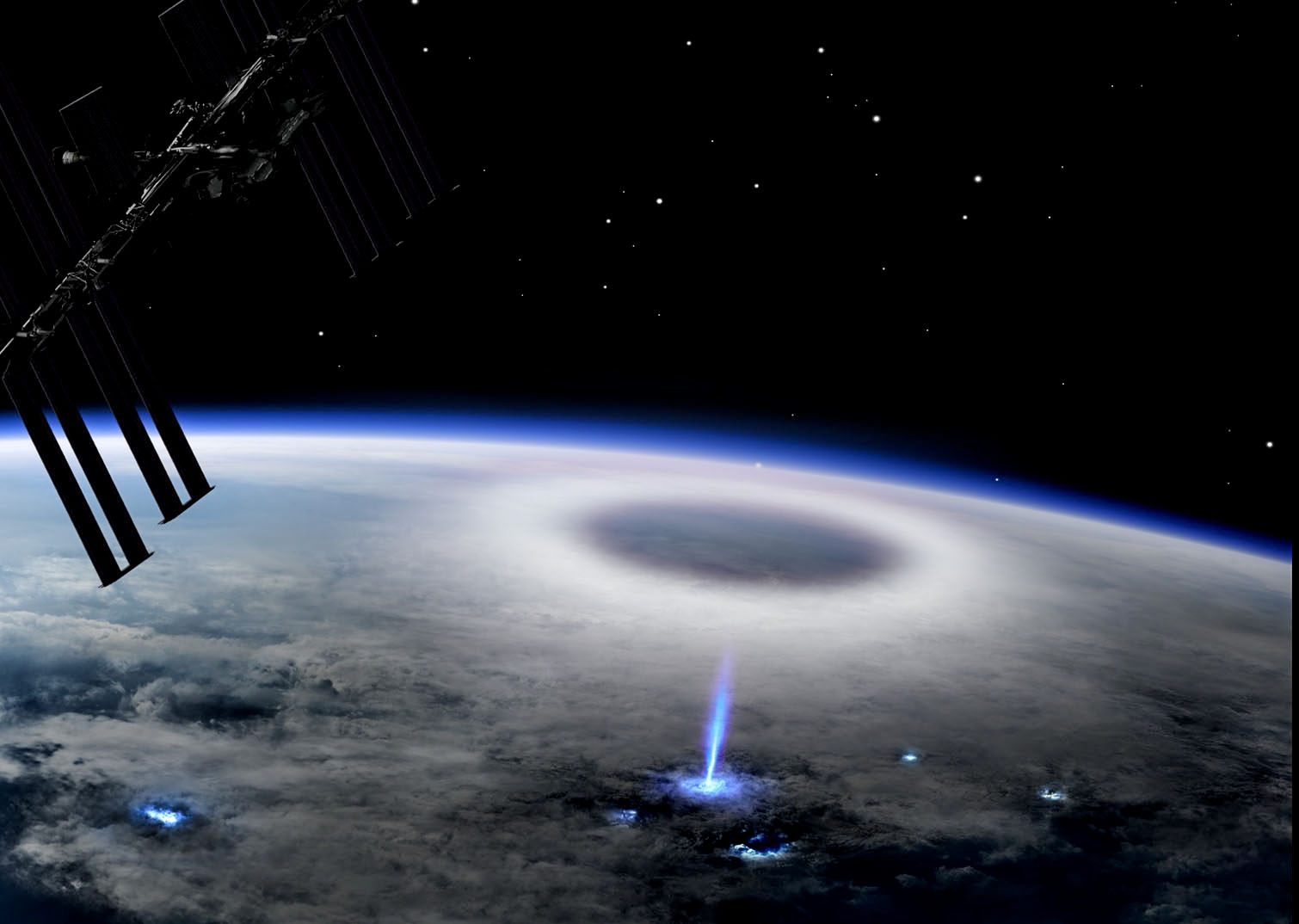Science in Space June 2025
Scientists use instruments on the International Space Station to study phenomena in Earth’s ionosphere or upper atmosphere including thunderstorms, lightning, and transient luminous events (TLEs). TLEs take many forms, including blue jets, discharges that grow upward into the stratosphere from cloud tops, and colorful bursts of energy above storms called Stratospheric/Mesospheric Perturbations Resulting from Intense Thunderstorm Electrification or SPRITES.
Red SPRITES are visible above a line of thunderstorms off the coast of South Africa.NASATLEs can disrupt communication systems on the ground and pose a threat to aircraft and spacecraft. Understanding these phenomena also could improve atmospheric models and weather predictions. Because these events occur well above the altitudes of normal lightning and storm clouds, they are difficult to observe from the ground. ASIM, an investigation from ESA (European Space Agency), uses a monitor on the exterior of the space station to collect data on TLEs. These data are providing insights into how thunderstorms affect Earth’s atmosphere and helping to improve atmospheric models used for weather and climate predictions.
ELVES and coronas
A study based on ASIM data confirmed that lightning-like discharges at the tops of thunderstorms can create another type of TLE, massive glowing rings in the upper atmosphere known as Emissions of Light and VLF Perturbations from EMP events, or ELVES. This experiment showed that these discharges influence the ionosphere and helped scientists learn more about Earth and space weather.
ASIM-based research also described the physical properties of different types of corona discharges in thunderstorm clouds. Corona discharges are linked to powerful but short-lived electrical bursts near the tops of clouds. The data provide a reference to support further investigation into the mechanisms behind these discharges and their role in the initiation of lightning, an important problem in lightning physics.
Other researchers used ASIM measurements along with ground-based electric field measurements to determine the height of a blue discharge from a thundercloud.
Cloud close-ups
To view this video please enable JavaScript, and consider upgrading to a web browser that supports HTML5 video
Lightning on Earth as captured from the space station.NASAAnother ESA investigation, Thor-Davis, evaluated use of a special camera to photograph high-altitude thunderstorms through the windows of the space station’s cupola. The camera can observe thunderstorm electrical activity at up to 100,000 frames per second and could be a useful tool for space-based observation of severe electrical storms and other applications.
Seeing storms from satellites
Deployment of the Light-1 CubeSat from the space station.NASAThe JAXA (Japan Aerospace Exploration Agency) investigation Light-1 CubeSat used detectors integrated into a compact satellite to observe terrestrial gamma-ray flashes in the upper atmosphere. These high intensity, energetic events can expose aircraft, aircraft electronics, and passengers to excessive radiation. Researchers are planning to compare data collected from the mission with ground-based observations to provide more comprehensive maps of lightning and thunderstorms in the atmosphere. Small satellite detectors could cost less and be manufactured in less time than other approaches.
Keep ExploringDiscover More Topics From NASA
Space Station Research and Technology
Space Station Research Results
Latest News from Space Station Research
Station Researcher’s Guide Series
Read More Details
Finally We wish PressBee provided you with enough information of ( Studying Storms from Space Station )
Also on site :
- ‘She lit up the classroom’: First British victims of Air India plane crash named after 241 killed
- Increased ICE detentions and deportations create climate of fear and stress
- Numbrix 9 - June 13

